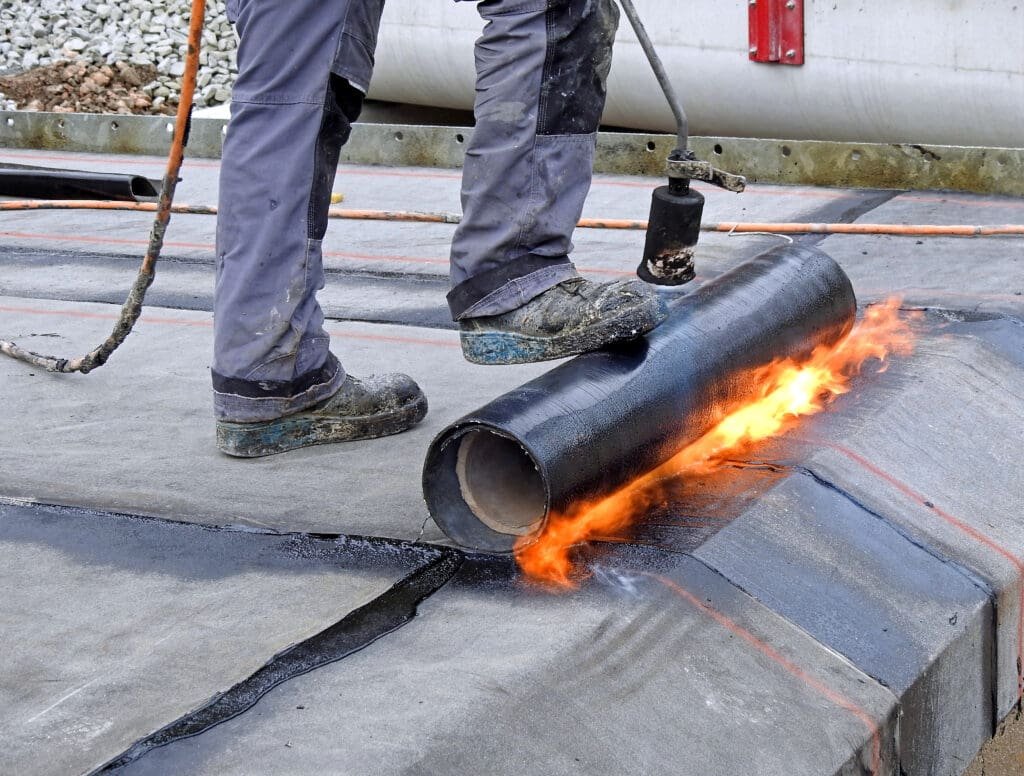Introduction to Expansion Joints in Construction
Have you ever wondered why buildings, bridges, and pipelines don’t shatter with changing temperatures, heavy loads or even earthquakes?
The secret lies in these connecting pieces known as expansion joints!
These heroes of construction accommodate movements caused by varying factors, reducing pressure and ensuring safety.
In the following article, we’ll explain what expansion joints are, their purpose, and the different types. Furthermore, we will explore the various materials they’re made of, where they’re used, and examine a specific example to provide a more detailed understanding.
To make sure we cover all the bases, we’ll also spotlight some reliable sources for more technical specifications.
Let’s start expanding our knowledge on expansion joints.
Table of Contents
Understanding Expansion Joints in Construction

Definition of Expansion Joints
An expansion joint is a gap or space provided in a structure that allows for the movement of different parts due to temperature changes, moisture, seismic activity, or other factors.
Purpose of Expansion Joints
- Prevents Cracking: Helps prevent cracks in concrete and other materials by accommodating movement.
- Absorbs Vibration: Reduces the impact of vibrations and other stresses on the structure.
- Allows Flexibility: Provides flexibility for temperature and weather variations.
Additional Purposes of Expansion Joints
- Improves Longevity: By mitigating stresses and strains, expansion joints help extend the lifespan of a structure.
- Facilitates Maintenance: They allow for easier access and modifications, making future maintenance less cumbersome.
- Ensures Safety: By preventing structural failures and damages, expansion joints contribute significantly to the overall safety of the structure.
Types of Expansion Joints
Building Expansion Joints
Different sections of a building are joined to allow movement and minimize stress.
Bridge Expansion Joints
These are used in bridges to allow for movement caused by temperature changes and load variations.
Pipeline Expansion Joints
These joints are used in pipelines to compensate for thermal expansion and contraction.
Concrete Expansion Joints
Slots or spaces typically placed between sections of concrete pavements to allow for thermal expansion and contraction.
Materials Used in Expansion Joints
| Material | Description |
|---|---|
| Rubber | Flexible and durable, often used in pipelines and buildings. |
| Metal | Used for high-temperature applications, such as in industrial settings. |
| Plastic | Cost-effective and used in various applications. |
| Fabric | Highly flexible and used in ducts and exhaust systems. |
Applications of Expansion Joints
Expansion joints are used in various structures to ensure durability and flexibility:
- Roads and highways
- Bridges
- Buildings
- Pipelines
- Railways
- Heating and air conditioning systems
- Industrial equipment
Example: Bridge Expansion Joints

In the context of a bridge, an expansion joint is essential for accommodating the expansion and contraction of the bridge materials due to temperature changes. These joints can be seen as gaps or devices installed between sections of the bridge to allow it to “move” without causing damage.
For more technical specifications, you can refer to reliable sources like Engineering ToolBox.
What is the Purpose of Expansion Joint Filler?

Functionality of Expansion Joint Filler
Expansion joint filler acts as a flexible, compressible material placed within the gaps of expansion joints. This helps to fill these spaces while allowing for movement. The filler material ensures that joints remain sealed against the entry of debris, water, and other substances that could cause damage or impede movement.
Benefits of Expansion Joint Filler
- Protects Against Intrusion: Prevents the ingress of debris and water that may cause damage to the internal structure.
- Enhances Durability: Maintains the integrity of the expansion joint by preventing materials from clogging or hardening within the gap.
- Improves Flexibility: Ensures that the joint can move freely without obstructions, which is essential for the joint’s intended functionality.
Common Types of Expansion Joint Filler Materials
| Material | Description |
|---|---|
| Polyurethane Foam | Lightweight, compressible, and provides excellent sealing properties. |
| Bitumen | Often used in road construction due to its elastic and waterproof properties. |
| Epoxy | Robust and durable, ideal for heavy-duty applications. |
| Cork | Natural and sustainable, commonly used in concrete pavements. |
Applications of Expansion Joint Filler
Expansion joint fillers are essential in various applications to maintain structural integrity:
- Concrete Sidewalks and Pavements: To allow for thermal expansion while preventing weeds and water infiltration.
- Parking Decks: To protect the structure from water seepage and freeze-thaw cycles.
- Bridges: To support the frequent movement and stress changes experienced due to traffic and temperature variations.
- High-Rise Buildings: To accommodate building sway and movement induced by wind and occupancy loads.
Considerations in Choosing Expansion Joint Filler
- Environment: Choose a material that can withstand the specific environmental conditions such as temperature extremes, moisture, and exposure to chemicals.
- Application: The type of structure and its movement characteristics dictate the choice of filler material. Roads may require different materials compared to buildings or pipelines.
- Durability: Consider the lifespan of the filler material, especially in high-stress environments like industrial facilities or heavy traffic areas.
Best Practices for Installation
Correct installation of expansion joint filler is essential for its effectiveness:
- Surface Preparation: Ensure the surfaces that will be filled are clean and free from debris to maximize adhesion.
- Correct Placement: Properly position the filler material to ensure consistent coverage and even distribution.
- Regular Inspections: Periodically inspect the filler material for wear and tear, especially in high-traffic or extreme conditions.
Example: Parking Deck Expansion Joint Filler
In parking decks, the use of an appropriate expansion joint filler material such as a polyurethane foam can mitigate water infiltration, preventing rusting of reinforcing steel and other water-related damages. The filler material must be resilient enough to accommodate the pressure from vehicles while maintaining its sealing capabilities.
Purpose of Expansion Couplings in Construction

Definition of Expansion Couplings
Expansion couplings are mechanical devices used to connect two pipes or ducts while allowing for movement and flexibility. These couplings enable the connected sections to expand and contract without causing damage to the system.
Why Use Expansion Couplings?
- Prevent Pipe Burst: Expansion couplings can handle the longitudinal expansion and contraction of pipes due to temperature variations, thus preventing bursts or leaks.
- Reduce Stress: They absorb stress and strain caused by temperature changes, seismic activities, or internal pressure changes, which could otherwise compromise the piping system.
- Maintain Alignment: These couplings help maintain the alignment between connected pipe sections during movement, ensuring the system remains functional.
Types of Expansion Couplings
Flexible Expansion Couplings
Made from materials like rubber or flexible metals, these are used where flexibility and vibration absorption are essential, such as in HVAC systems.
Metallic Expansion Couplings
Constructed from stainless steel or other metals, they are ideal for high-temperature and high-pressure applications, like industrial boilers or exhaust systems.
Sliding Expansion Couplings
These couplings have a sliding mechanism that allows for axial movement, which can be essential in long pipeline systems where significant expansion and contraction occur.
Materials Used in Expansion Couplings
| Material | Description |
|---|---|
| Rubber | Highly flexible, used in applications requiring damping of vibrations and noise, such as HVAC systems. |
| Stainless Steel | Durable and resistant to heat, often used in high-pressure and high-temperature environments. |
| Brass | Corrosion-resistant and used in smaller piping systems like those in plumbing. |
Applications of Expansion Couplings
Expansion couplings are essential in multiple construction and industrial settings:
- HVAC Systems: To accommodate the thermal expansion of ductwork and piping.
- Water Supply Systems: To prevent pipe damage due to temperature changes and water hammer effects.
- Industrial Pipelines: Especially in chemical and petroleum industries, where pipes are subjected to high temperatures and pressures.
- Building Services: To allow thermal movement within plumbing systems, ensuring long-lasting operation and minimal maintenance.
Best Practices for Installation
Proper installation of expansion couplings is critical for ensuring their effectiveness:
- Correct Sizing: Ensure that the coupling is appropriately sized to accommodate expected movements without overstressing the system.
- Proper Alignment: Align the pipes correctly to avoid undue stress and premature failure of the coupling.
- Secure Fastening: Use appropriate fasteners and follow manufacturer guidelines to prevent the coupling from becoming loose.
- Regular Maintenance: Periodically inspect and maintain couplings to identify and address wear and tear early.
Example: Industrial Pipeline Expansion Coupling
In an industrial setting, such as a chemical plant, an expansion coupling made of stainless steel might be used to handle the high pressure and elevated temperatures. These couplings ensure that the pipeline can safely expand and contract without compromising its integrity, thereby preventing leaks or bursts.
In Summary
In conclusion, expansion joints uphold the structural integrity of buildings, bridges, pipelines, highways, and other similar construction projects.
They adapt to temperature changes, weather variations, and possible seismic activities by lessening the impact of these natural movements. Variations such as building expansion joints, bridge expansion joints, pipeline expansion joints, and many more serve to enable flexibility while mitigating probability of cracks or fractures by absorbing vibrations.
Various materials like rubber, metal, or plastic are utilized in the construction, depending on the specific requirements and environmental conditions. Understanding the mechanics of expansion joints and their respective applications is essential for anyone involved in construction, architecture, and civil engineering.
Frequently Asked Questions – FAQs
What is the function of expansion joints in construction?
Expansion joints are necessary in construction to help alleviate stress caused by natural forces such as temperature change and seismic activity. They accommodate movement and flexibility in structures, thereby preventing cracks or materials degradation.
What are some examples of expansion joints?
Examples of expansion joints include building expansion joints, bridge expansion joints, and pipeline expansion joints. The type of joint used depends on the nature of the structure and its specific needs in terms of movement and stress absorption.
What materials are used in making expansion joints?
Materials used in making expansion joints include rubber, plastic, and metal. The choice of material depends on various factors such as environment, application, and temperature resistance needs.
Why are expansion joints crucial in bridge construction?
Expansion joints are crucial in bridge construction as they allow for movement caused by temperature changes and load variations. Without these joints, these natural forces can lead to serious structural damage.






